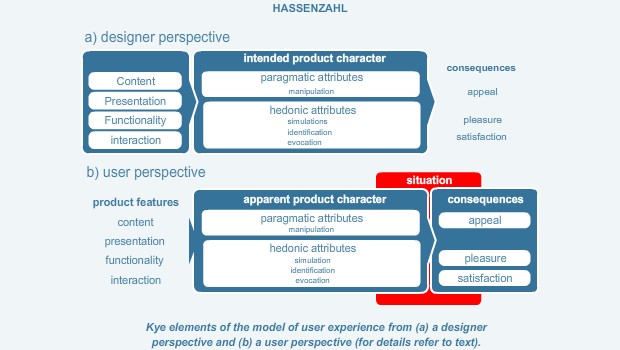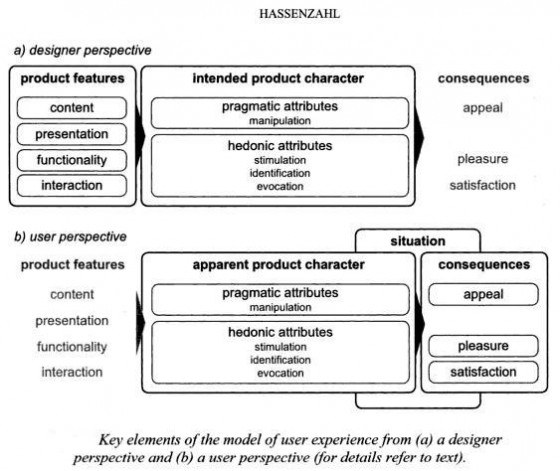During the course of my web wanderings which have revolved around usability and user experience recently, I came across this interesting Hassenzahl’s model in the book ‘Funology’, that talks about the relationships between an user and a product. It is mainly about user experience, especially in reference to ‘fun’ in product design.
It elaborates on how users assign some attributes to a product or service when using it. There are different attributes for each individual user. The model suggests that user experience is the result of these attributes and the situation in which the product is utilized.
You can see it here Funology: From Usability to Enjoyment.
The model groups attributes into four categories: Manipulation, Identification, Stimulation, Evocation, also further grouped into Pragmatic and Hedonic attributes. The pragmatic attributes concern the use and function of the product, the hedonic attributes are more to do with the user’s state of mind, their psychological well-being. The model suggests that products can be designed to consider the user experience, but that the user experience itself can’t really be designed because it will change from situation to situation and in varied contexts.
When I look closely at the model, I find that it can apply to the elearning courseware we create as well. My next post will explore some of these attributes. I hope to uncover some clues that lead to better elearning design, or rather elearning that is ‘fun’.



















